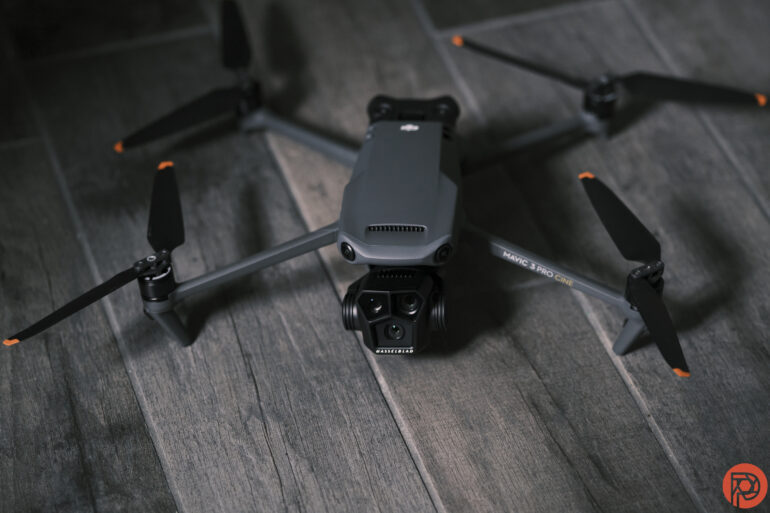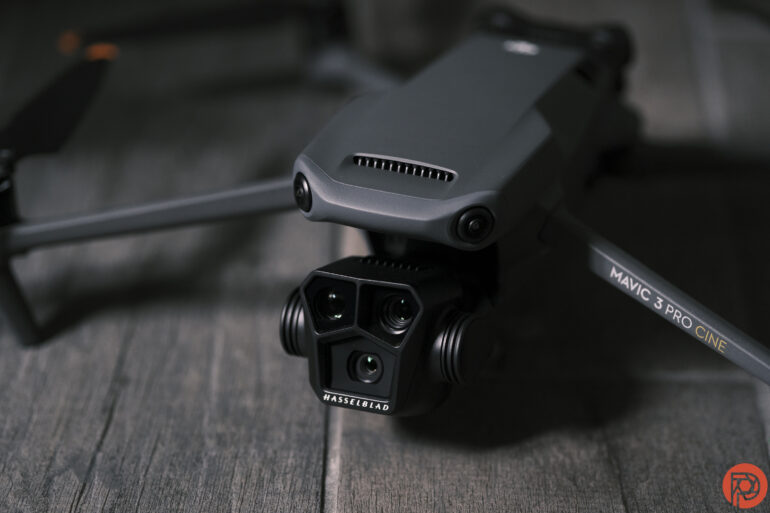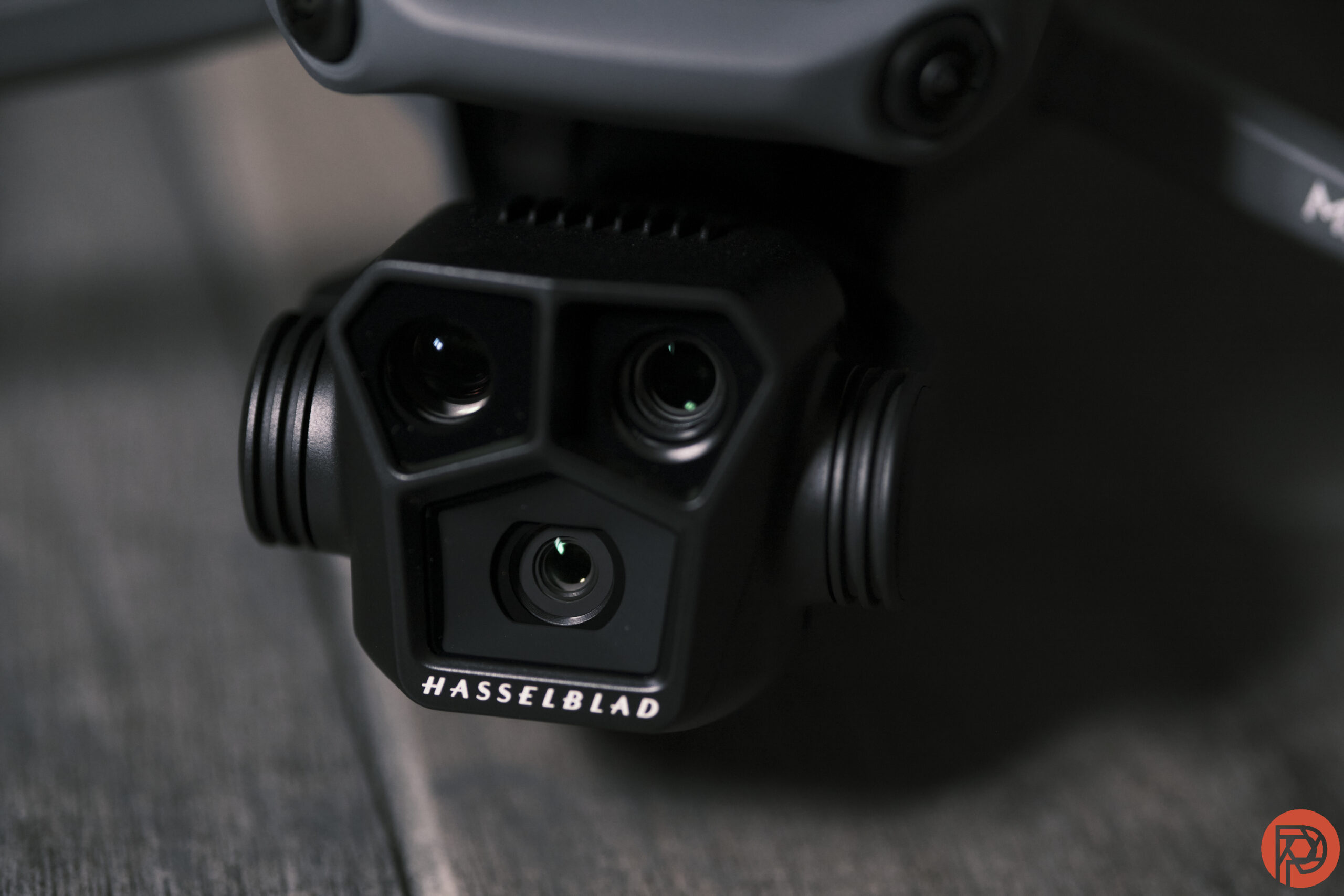The DJI Mavic 3’s Micro Four Thirds Hasselblad camera puts the drone at the top of many aerial photographers’ wish lists — but now DJI is outfitting a new Pro version with three different cameras. The DJI Mavic 3 Pro keeps the same main 24mm equivalent camera-lens combo but adds a 70mm equivalent and upgrades the 166mm equivalent secondary camera. While the primary camera’s larger sensor is still the biggest reason to buy the drone, the two zoom cameras’ smaller sensors will get in closer. Those 70mm and 166mm lenses offer more background compression, as well as offering an alternative when flying closer is unsafe, time-restricted, or otherwise interrupts the scene.
DJI sent a pre-launch copy of the drone. While weather and time have prevented the drone from taking off just yet, I unboxed the latest high-end drone from DJI to see what the latest DJI has to offer aerial photographers.
DJI Mavic 3 Pro: Three drones in one?

The DJI Mavic 3 Pro shares several similarities with the drone without the Pro in the name, including the main Hasselblad camera, Omnidirectional Sensing to avoid obstacles, a 14-degree F minimum operating temperature, and a 12 m/s wind resistance rating. Here are the Pro version’s main differences:
- The main camera is the same as in the Mavic 3, a 20-megapixel 4/3 sensor with a 24mm equivalent lens that can be adjusted from f2.8 to f11.
- The “tele cam” is a 166mm lens on a 1/2” inch sensor, but it’s upgraded to a wider f3.4 on the Pro.
- An entirely new 70mm equivalent with an f2.8 has been added to the drone, which is paired with a 1/1.3-inch sensor. This isn’t just a favorite focal length adapted for air, though, this mid-tele camera can shoot at 48 megapixels or 12 megapixels.
- The extra camera increases the drone’s weight to 958g compared to 895g.
- That added weight decreases the battery life slightly, from 46 to 43 minutes.
Do drones really need zoom?

The newly added mid-tele camera has a sensor with similar specs to the DJI Mini 3 Pro as a 1/1.3-inch that’s cable of shooting 48 or 12-megapixel images. The difference is that on the Mavic 3 Pro, that sensor is paired with a lens equivalent to 70mm rather than 24mm. No photographer capable of reading a spec sheet will spend the $2,199 base price for the Mavic 3 Pro only to exclusively use a sensor like the one in the $759 Mini 3 Pro. The main reason to buy the Mavic 3 series is still that Micro Four Thirds main camera.
But, what the addition of that mid-telephoto camera does is increase both versatility and safety. Despite having a smaller sensor, the 70mm lens offers more background compression. Yes, a 4/3 sensor with that same lens would be even more effective at creating soft backgrounds, but the mid-tele still has a shallower depth of field than the 24mm. While the main camera is designed for wide, sharp vistas, the mid-tele is made for softer, more compressed backgrounds. The mid-tele also creates higher resolution images than the main 24mm set, with 48 or 12-megapixel shots. The aperture is also fixed at f2.8 instead of the variable f2.8-11 of the primary camera.
The 166mm lens is less exciting simply because the original Mavic 3 already had that capability. The Pro tweaks it a bit, brightening the aperture to f3.4 rather than f4.4.
Besides the additional camera’s background compression, the Pro version is set to offer more versatility than the less expensive original. The Pro version effectively makes it possible to capture both stunning aerial wide-angle views and closer shots with compressed backgrounds in seconds. Imagine flying when you are crunched for time, whether because you’re shooting a wedding with a tight timeline or because the weather will change. Other times, things like power lines, tree branches, or a limited line of sight from the ground can prevent pilots from physically flying closer. In such scenarios, the mid-tele and tele lenses become safety features.
Of course, adding to the drone increases its weight which, in turn, reduces the flight time per charge. It’s a negligible difference, however, at 43 minutes compared to 46.
While the extra camera and improved tele camera are enticing, the Pro version must stay at a price point close to the original because the reason to buy the drone — that 4/3 sensor — remains unchanged in both versions. Thankfully, the prices between the Mavic 3 and Mavic 3 Pro aren’t too far apart. While the original retails for $2,049 for the base options, the Pro sits at $2,199. A $150 price difference is incredibly reasonable for getting that extra third lens. The DJI Mavic Pro will also be available in a Fly More Combo for $2,999 or a Fly More with the upgraded Pro controller for $3,889. A Cine version adds 1 TB of internal storage and ApplePro Res to the DJI Mavic Pro, but sits at a much steeper $4,799 retail price.


